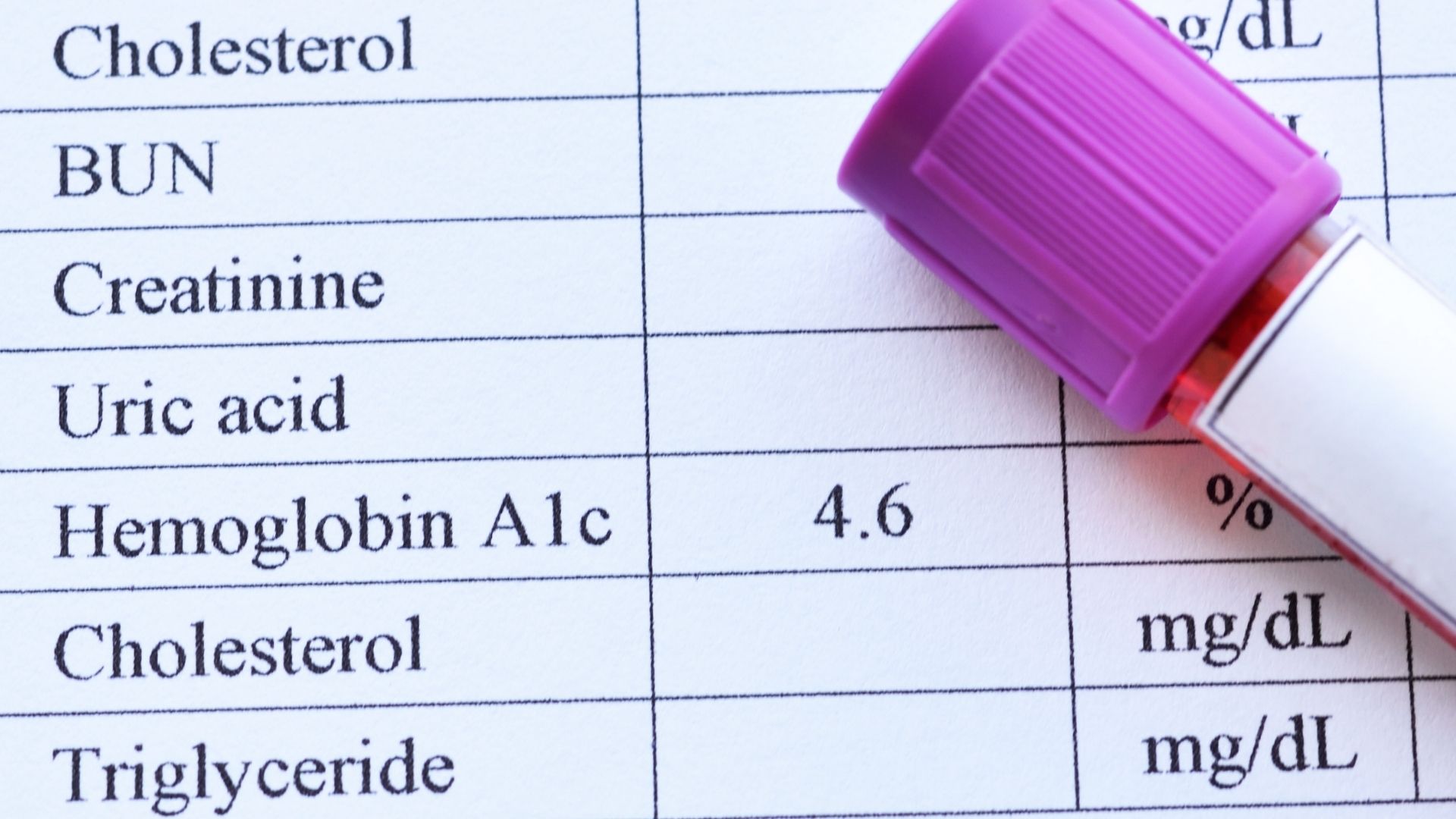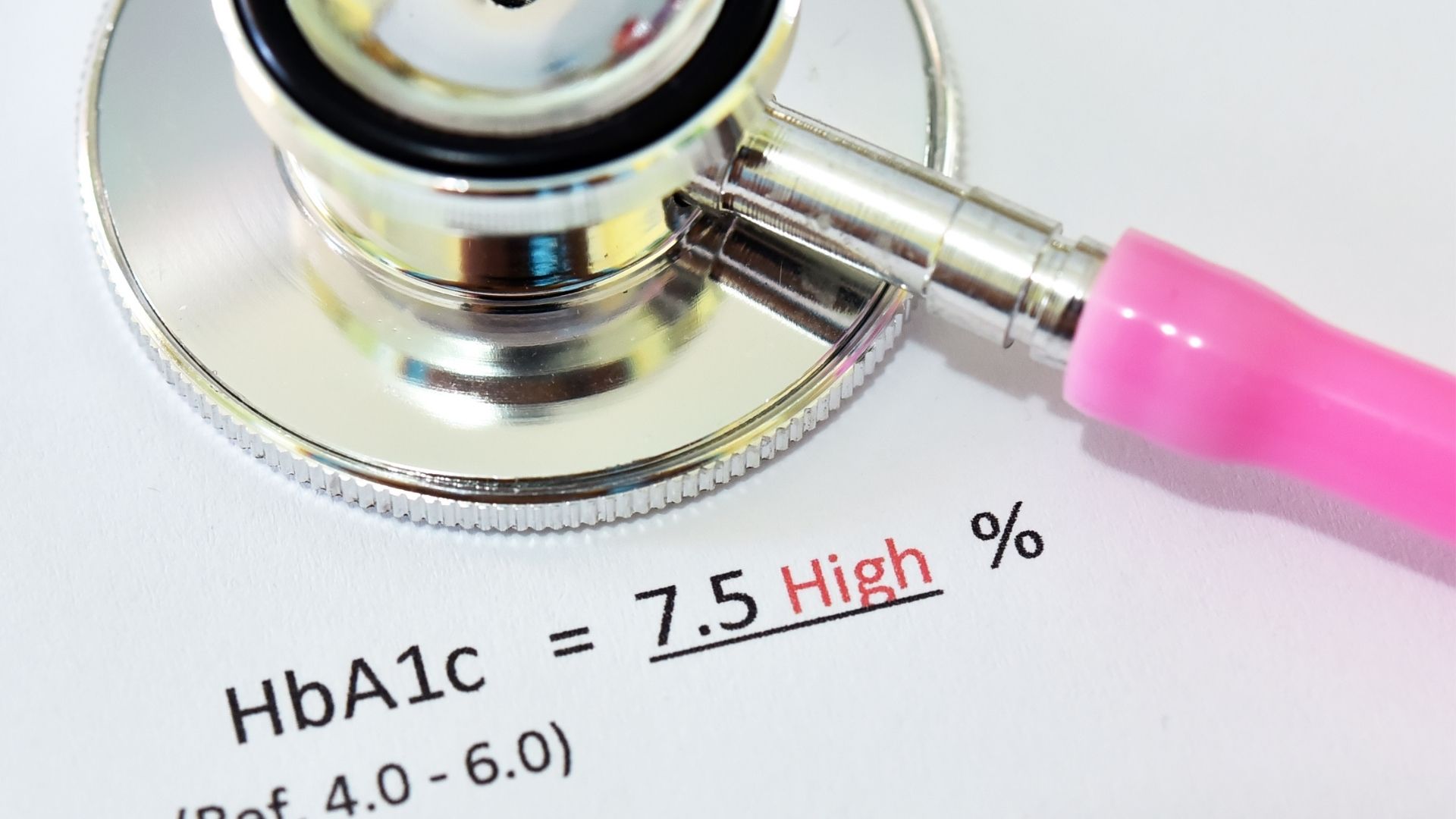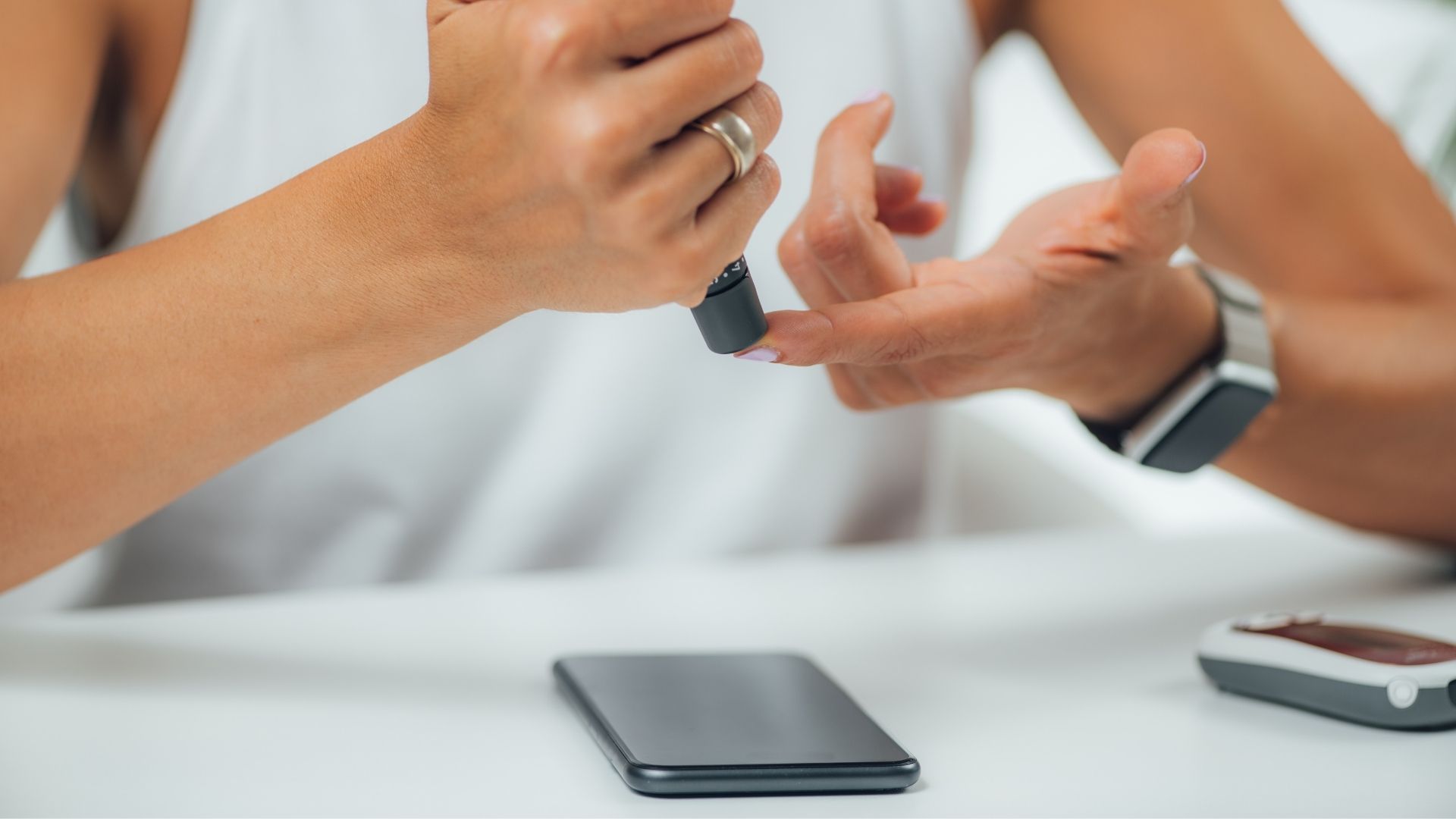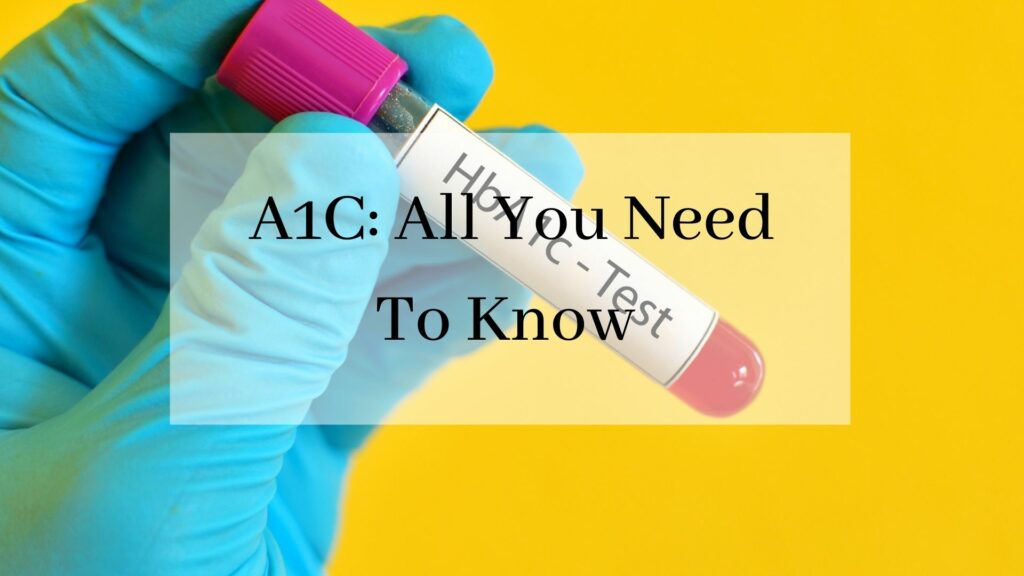This article will explore the basics of the blood sugar level test that has become so popular in recent years. For those who are unaware, this test measures your average blood sugar level over a two- to three-month period. What does this mean for you? It means that if your A1C level is high, it may be time to make some changes to help control your diabetes. Also, lower your risk of developing complications like blindness or kidney disease!
Contents
What is A1c?
A blood test to measure your average blood sugar level over the last two to three months is glycated hemoglobin. It measures how much glucose sticks to red blood cells in your bloodstream. It also checks how much has built up in your cells.
A blood sugar level that is too high can cause diabetes complications, such as plaque buildup in your arteries. nerve damage to fingers and toes, increase the risk for heart disease, kidney problems, blindness, and more are also present.
The higher your index score, the greater the amount of glucose has built up inside cells over time. There is a consensus that the goal index for diabetics should be under seven percent. However, some organizations recommend an even lower target of six and a half to seven and a half percent. Normal levels are between four and five percent or around 100 milligrams per decilitre.
It can identify prediabetes, a condition that increases your risk of diabetes.
Why Should One Take the A1c Test
Testing may assist health care providers in detecting prediabetes. They may advise you on lifestyle modifications to help you avoid or delay type 2 diabetes. Work with you to track the disease and advise you on treatment choices to minimize complications. If you have risk factors for prediabetic or diabetes, see your doctor for testing.
How does the Test Determine Pre-diabetes and Diabetes

The A1c test is prevalent in the use of diagnosis of type 2 diabetes and prediabetes by healthcare professionals. You don’t have to fast before drawing blood for an A1C test. Blood can be taken at any time of day.
Can A1c Test be Useful During Pregnancy?
The A1C test is in use by healthcare specialists to check for undiagnosed diabetes in high-risk individuals during early pregnancy. Testing early in pregnancy may show values based on the time before you became pregnant. The A1C test reflects your average blood glucose levels over the previous three months.
If you had gestational diabetes, you should test for diabetes no later than 12 weeks after your child’s birth. If your blood sugar levels are still high at this time, you might have type 2 diabetes. Even if your blood sugar levels are normal. You have an increase in the risk of developing type 2 diabetes in the future. One should check every three years.
What You Can Expect During the A1c Test
A member of your health care team inserts a needle into a vein in your arm or pricks your fingertip with a tiny, pointed lancet to obtain a blood sample during the A1C test. The blood is collected from a vein, it is sent to a lab for analysis. Your doctor’s office may analyze blood taken from a finger prick. The AIC test results are then compared to your blood glucose levels, which were likely checked at the time of the test. If you experience symptoms such as excessive thirst or hunger, extreme tiredness, and weakness, nausea or vomiting, blurred vision, or frequent urination during a period when no other disease is present in addition to having an elevated AIC, your doctor should be notified.
Can the A1C Test Result in a Different Diagnosis
Yes. Some persons with diabetes have a blood glucose measurement that shows the disease when an A1C test does not. A reverse situation can also happen: a blood glucose test may indicate diabetes when an A1C test does not. Because of these differences in test results, health care experts repeat tests before making a diagnosis to determine whether the patient is at risk for diabetes or has undiagnosed diabetes.
What do the Numbers on the Test Mean?

When it comes to numbers, no one-size-fits-all goal works. A1C target levels can differ depending on a person’s age and other criteria, and your target may be different from that of others. The objective for the great majority of persons with diabetes is an A1C of less than 7%.
A1C test results later convert as a percentage. The higher your blood sugar levels have been in the last two to three months, the better. Based on the following criteria, A1C tests can also be in use for diagnosis:
- Your A1C level is between 5.7 and less than 6.5 percent, which indicates that it is in the prediabetes range.
- If you have an A1C level of 6.5% or greater, your blood sugar levels are in the diabetic range
How Precise is the A1c Test
The A1C test result can be higher or lower than the first measurement after repeating it several times. For example, an A1C of 6.8 percent might be given in a range from 6.4 to 7.2 percent on a repeat test with the same blood sample, based on a previous study.
A second test should always be done on a separate blood sample taken at least one month after the first measurement.
How does the Test Diagnose Diabetes
The AIC test is in use to monitor glucose control over time. It tells healthcare providers how well you are managing your diabetes, and whether there may be some problems with blood sugar levels or the way your body handles glucose in general. You will typically have an AIC every three months for a year after diagnosis while continuing any insulin injections, then every three to six months for another year, and then annually after that.
If you aren’t achieving your therapy targets, your healthcare providers may check your A1C more frequently.
Self-Monitoring and A1c

Self-monitoring at home with a blood glucose meter or another device is part of your treatment plan. Your health care team will instruct you on how often and when to check your blood sugar levels.
the blood sugar levels in milligrams of sugar per deciliter (mg/dL) or millimoles of sugar per liter (mmol/L) are reported by a self-monitoring device. The measurement reflects your blood sugar level at the time you took the test. As a result, there is some variation throughout the day based on when you last ate.
For example, if your blood sugar level is 100 mg/dL before dinner and 120 mg/dL one hour after eating, the reading of “120” will be in use in this report. A result of 115 may indicate more recent high blood glucose levels than a value of 105 because it measures what has been happening over the last few hours.
A result of 100 mg/dL or less will be “normal.” A reading between 101 and 126 indicates that your blood sugar is in the prediabetes range, so you’ll need to work with your health care team on lifestyle changes to prevent type-two diabetes from developing. If your test shows a value of 126 to 200, your blood sugar levels are in the range for type-one diabetes. Your health care team will need to intensify your treatment plan and monitor you more closely.
A result of 201 mg/dL or higher means that you have a confirmed diagnosis of type-two diabetes because it indicates consistently high blood sugar over time. If this is the case, your health care team will work with you to develop a treatment plan that includes medication and lifestyle changes.
How self-monitoring helps
Self-monitoring allows you to assess your eating habits and exercise levels, as well as daily treatment objectives. It also aids in the tracking of whether or not you are meeting your A1C target.
Your blood sugar levels should be, on average, below 154 mg/dL (8.6 mmol/L) if your goal is to maintain an AIC of less than seven percent.
The AIC measures the blood sugar levels over a three-month period and is an important benchmark for diabetes management because it reflects both your glucose control (how much you are testing) and how often you are checking.
The patients who work to maintain an average level below 100 mg/dL or five mmol /L typically experience fewer complications and a reduced risk of developing diabetes-related health problems.
Limitations of the A1c Test
The A1C test may affect by a variety of factors. These are some examples of what might go wrong:
- Pregnancy
- Recent or heavy blood loss
- Recent blood transfusion
- Conditions that result in insufficient red blood cells (anemias)
- Hemoglobin variants
The most frequent form of the oxygen-transporting hemoglobin protein is hemoglobin A. The presence of additional variants in the protein may cause faulty A1C test results. Individuals with African, Mediterranean or Southeast Asian ancestry are more likely to have hemoglobin variants.
If you have a hemoglobin variant, your test may need to be sent to a specialty lab for diagnosis and monitoring of diabetes.
Conclusion
The American Diabetes Association (ADA) recommends that people with diabetes strive for an A1c level of 7% or lower. This is the best way to prevent serious complications, such as heart disease and stroke. For some people, this may be achievable without medication. While others will need insulin therapy in addition to meal planning and physical activity management. If you have Type 2 diabetes, your doctor can help you determine which treatment option would work best for you in your situation. It’s important not to become discouraged if one plan doesn’t seem to work because there are many ways to manage blood sugar levels effectively.
Do you want to get rid of diabetes? Join our online diabetes consultation program and reverse your Diabetes naturally through lifestyle changes such as a Personalized Diet plan, Exercise, dieticians, and health coaches.


